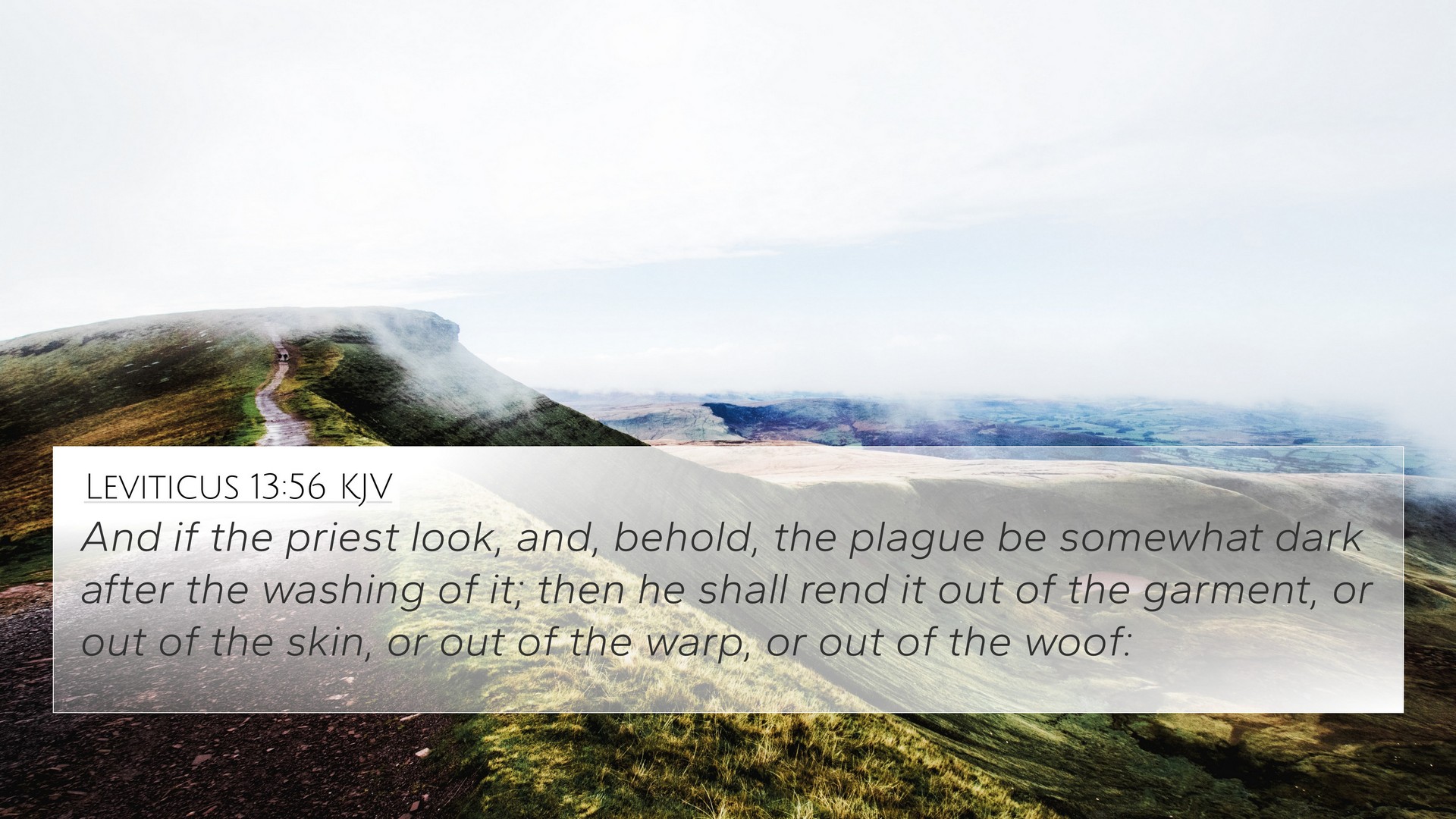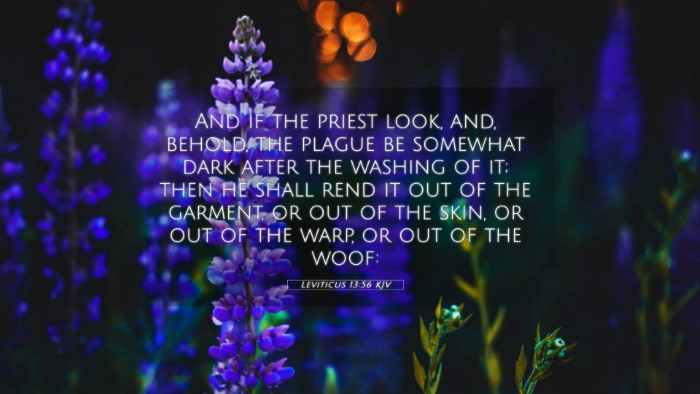Understanding Leviticus 13:56
Leviticus 13:56 states: "And if the priest look, and, behold, the plague be somewhat dark after the living of the white, then he shall pronounce him unclean: it is a plague of the scab."
This verse is part of the comprehensive laws regarding leprosy and skin diseases found in Leviticus 13. It highlights the role of the priest as an examinator and judge of cleanliness among the people of Israel.
Meaning and Interpretation
The significance of this verse is reflected in various commentaries, revealing deeper insights into its theological and practical implications:
-
Matthew Henry's Commentary:
Matthew Henry emphasizes the seriousness with which the Israelites had to regard these laws. The priest's involvement shows that spiritual and physical cleanliness were interlinked; therefore, the community was to maintain holiness before God.
-
Albert Barnes' Notes:
Barnes points out that the distinction between clean and unclean was vital for the health of both the individual and the community. He notes that the darkening of the plague signifies a worsening of the condition, reminding believers of the need for vigilance in their spiritual lives.
-
Adam Clarke's Commentary:
Clarke elaborates that the priest's decisions were not merely for physical healing but were intimately tied to the spiritual state of the person afflicted. This reflects how God desires purity not only in body but in the hearts of His people.
Cross-references and Thematic Connections
This verse connects to several other passages that elucidate the themes of cleanliness, sin, and the role of priests in maintaining the holiness of the people:
- Leviticus 14:1-32: The procedures for purification from leprosy.
- Numbers 5:2-3: The laws regarding those unclean in Israel.
- Isaiah 1:6: A reflection on the unclean state of the people beyond skin diseases, urging a return to holiness.
- 1 Peter 1:16: “Be ye holy; for I am holy.” A New Testament echo of Old Testament principles.
- Matthew 8:1-4: Jesus healing a leper, showcasing fulfillment of the law in grace.
- Hebrews 13:12: Referring to Jesus as the ultimate sacrifice, purifying those who believe.
- James 4:8: “Cleanse your hands, ye sinners; and purify your hearts, ye double-minded.”
Tools for Bible Cross-Referencing
To explore these connections effectively, believers can utilize various tools:
- Bible concordance
- Bible cross-reference guide
- Cross-reference Bible study methods
- Bible reference resources
- Bible chain references
Using Cross-References for Deeper Understanding
Engaging with cross-references in the Bible provides deeper insights into how Scripture speaks to various themes, such as:
- Identifying connections between Old and New Testament: Exploring the continuity of God's holiness and cleanliness standards.
- Comparative study of Pauline epistles: Understanding the implications of spiritual cleanliness in Christian doctrine.
- Cross-referencing Psalms with New Testament teachings: Analyzing how themes of purity appear in both Testaments.
- Interpreting Biblical themes through cross-references: Discern how leprosy symbolizes sin in the Christian life.
Conclusion
Leviticus 13:56 serves not only as a guideline for the Israelites regarding physical ailments but also invites believers today to reflect on spiritual cleanliness. By investigating cross-references and thematic connections in Scripture, we gain a holistic understanding of God's desire for His people—to be set apart and holy. The detailed considerations provided by established commentaries enhance our spiritual walk, guiding us toward engaging deeper with Biblical texts through comparative analysis and reflection.


